
 |
|
|
 / /
 / /
 / /
 / /

|
|
|||||||
 |
|
|
Thread Tools | Display Modes |
|
|
|
#1
|
|||
|
|||
|
Found this which might be helpful for peeps trying to track down problems with engines
ENGINE DIAGNOSIS Engine Smokes Engine Smoke is black (soot like) ? Running Rich (too much fuel, not enough air). Engine Smoke is gray ? burning oil ? Smoke happens When engine is started ? Valve Seals (allowing oil to travel down guides into combustion chamber) When engine is accelerated ? Worn rings (Perform compression test) When engine is de-accelerated ? Worn Valve Guides Engine Smoke is white ? Coolant entering combustion chamber often VIA head gasket. Pressure test cooling system and check all plugs. The ?cleanest? plug is washed clean of all ash is often cylinder with coolant leaking into it. White smoke will become worse when coolant is full and engine is at normal operating temperature. Check for combustion by products in coolant. Pressure test cooling system and inspect for coolant leaking into cylinder. Slow oil consumption (no smoke) ? Worn oil control rings Engine has blowby ? Remove oil cap while engine is running, if gray smoke is seen it is a major ring problem or a hole is in the piston. (Step 1) Engine Runs Rough (constantly missing cylinder) Perform Power Balance Test to determine the dead cylinder Once dead cylinder has been identified, inspect fuel injector and spark plug and wire to cylinder. If both fuel and injector seem good, perform a compression test. If plug is fouled with oil, the cylinder has a major oil consumption problem (rings or damaged piston) If plug is washed clean is a head gasket issue. (Step 2) Engine Compression Test Check cylinder compression in all cylinders. Warm engine up, Remove all plugs, Disable fuel system and ground or disable ignition system, block throttle plates open, install battery charger. Install pressure gauge. Crank engine at least 3 times per cylinder and check reading on pressure gauge. If two adjoining cylinders are low, it?s due to a blown adjoining head gasket. If one cylinder is low, perform a wet test. If compression test shows high compression on all cylinders, it is due to carbon buildup If compression test shows low compression on all cylinders it is due to incorrect valve timing (jumped time) (Step 3) Wet Test ? Add 2 squirts of oil to the low cylinder If cylinder readings increase on wet-test, its worn rings, if not, its either the intake or exhaust valve seating (or in rare cases a hole in the piston). Perform a combustion leak testing. (Step 4) Combustion leak testing Bring cylinder to TDC Install leak tester Listen for leak If air is heard coming out of tail pipe, it is an exhaust valve-sealing problem (seating problem) If air is heard coming out of the throttle plates, it is an intake valve-sealing problem (seating problem) If air is heard out of the dipstick or the oil cap, its rings or a bad piston If bubbles come out of radiator, it?s a blown head gasket. Engine Makes Noise (Step 1) Check oil level and condition. If oil looks old or poor change oil and filter with correct type. If oil is ?too full? and ?milky? the head gasket has failed and coolant is mixing with the oil. (Step 2) Figure out, when and where the engine noise happens. If noise happiness when engine is Drive/Neutral ? Engine may not be the problem, transmission, or flexplate or clutch may be issue. Cold/Warm Engine - No Load - High RPM (2000) A piston (wrist) pin knock. Loose piston pins will generally knock louder when the engine is not operating under a load. A piston pin knock is sometimes mistaken for a connecting rod knock although the pin knock is not as loud. If it is possible to adjust the exhaust valve so that it stays open all the time, the pin knock will double up so it makes twice the number of sounds. Cold/Warm Engine - No Load - Higher RPM (3000-4000) The connecting rod knock is caused by excessive clearance between the connecting rod bearing inserts and the bearing surface of the crankshaft throw. It makes a loud, sharp knock while the engine is running at a constant speed without a load. You can detect the faulty connecting rod bearing by disconnecting and connecting the spark plug leads one at a time. When you disconnect the lead from the cylinder with the loose rod bearing, the knock will go away or at least change a great deal. Cold/Warm Engine - No Load - Low RPM (Idle) Loose main bearings on the crankshaft cause a heavy, dull, thud type noise which is usually worse with the engine loaded. Loose connecting rod bearings or main bearings will usually cause low oil pressure. This low pressure will be more noticeable at slow engine speeds. This is because the oil pressure leaks off past the loose bearing, and at slow engine speeds, the oil pump turns too slow to pump enough oil to maintain the proper pressure. At higher speeds, enough oil is pumped to overcome the leak and build up the oil pressure. If we have a sharp knock or a dull thud sound and the oil pressure is low, the connecting rods or main bearings are worn. Noise when Cold - Then Goes Away Once Warm A piston slap usually sounds off only when the engine is on a pull. Like the connecting rod, disconnecting the spark plug wire to the affected cylinder will generally stop the knock. Pistons have been known to knock quite loud when the engine is cold, then the noise completely disappears after the engine warms up. Location Top of engine ? Valve Train Noise, Camshaft, Valves, Lifters, Springs, Rocker Arms Lower end of engine ? Connecting Rods ? Main Bearings Front of engine ? Timing Chain or Belt (Step 3) Perform Oil Pressure Test Install Oil Pressure Gauge. Warm Up Engine. Run Engine at 2000 RPM ? Oil pressure should be about 25-30 PSI If oil pressure is low ? Weak oil pump Worn Main Bearings Clogged Oil Pickup (screen) Low oil Wrong Oil (too thin) Stuck OPEN oil pressure relief valve (weak or broken) Aerated oil (bubbles/whipping) Oil leak (internal or external) If oil pressure is too high - Stuck CLOSED oil pressure relief valve Wrong Oil (too thick)
__________________
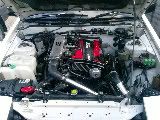  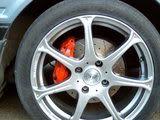 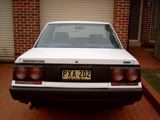 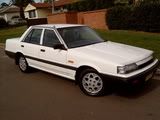 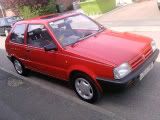
|
|
#2
|
||||
|
||||
|
very good post!
|
|
#3
|
||||
|
||||
|
Some really good pointers there. That is a good find
  . .Regards, Ian.
__________________

|
|
#4
|
||||
|
||||
|
Sticky.....
__________________
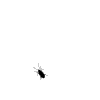 Quote:
|
|
#5
|
|||
|
|||
|
Thanks for reply. However, and correct me if I am wrong, but to set timing with a strobe light the engine must be turning and GND and 10 connected. When this is achieved is the jumper connection then not disengaged?
_____ XEVIL: NEW innovative software for SEO/SMM |
 |
| Thread Tools | |
| Display Modes | |
|
|